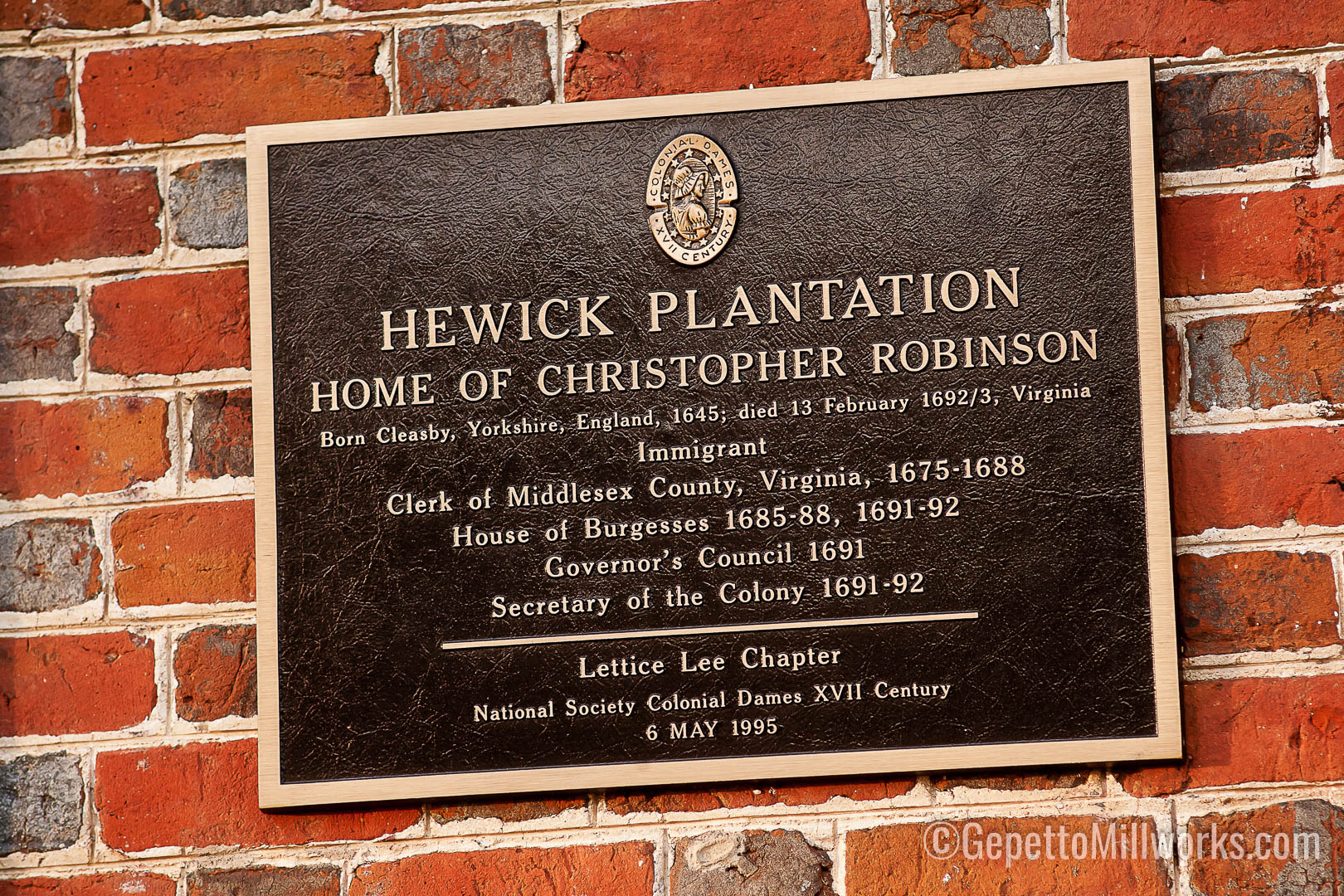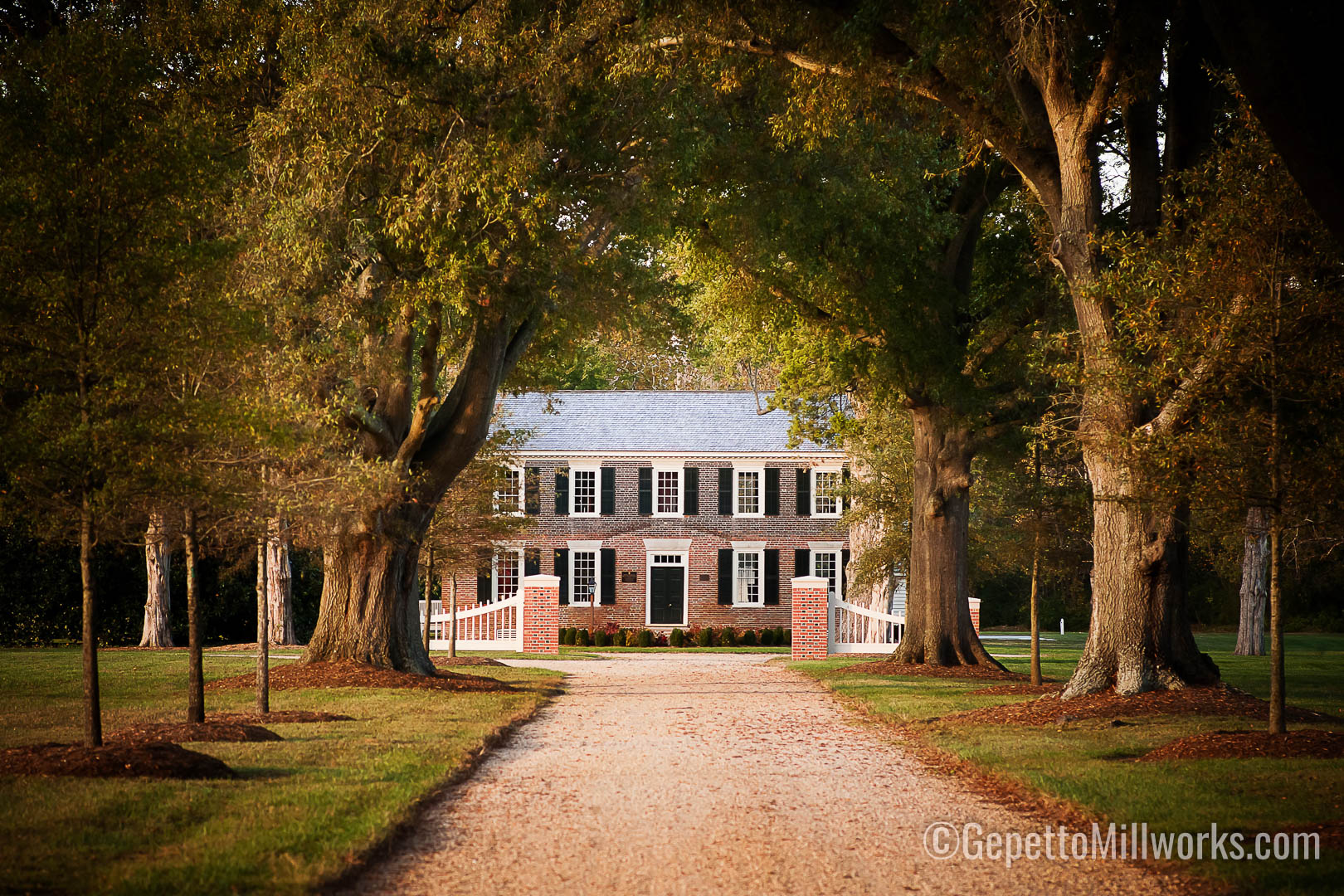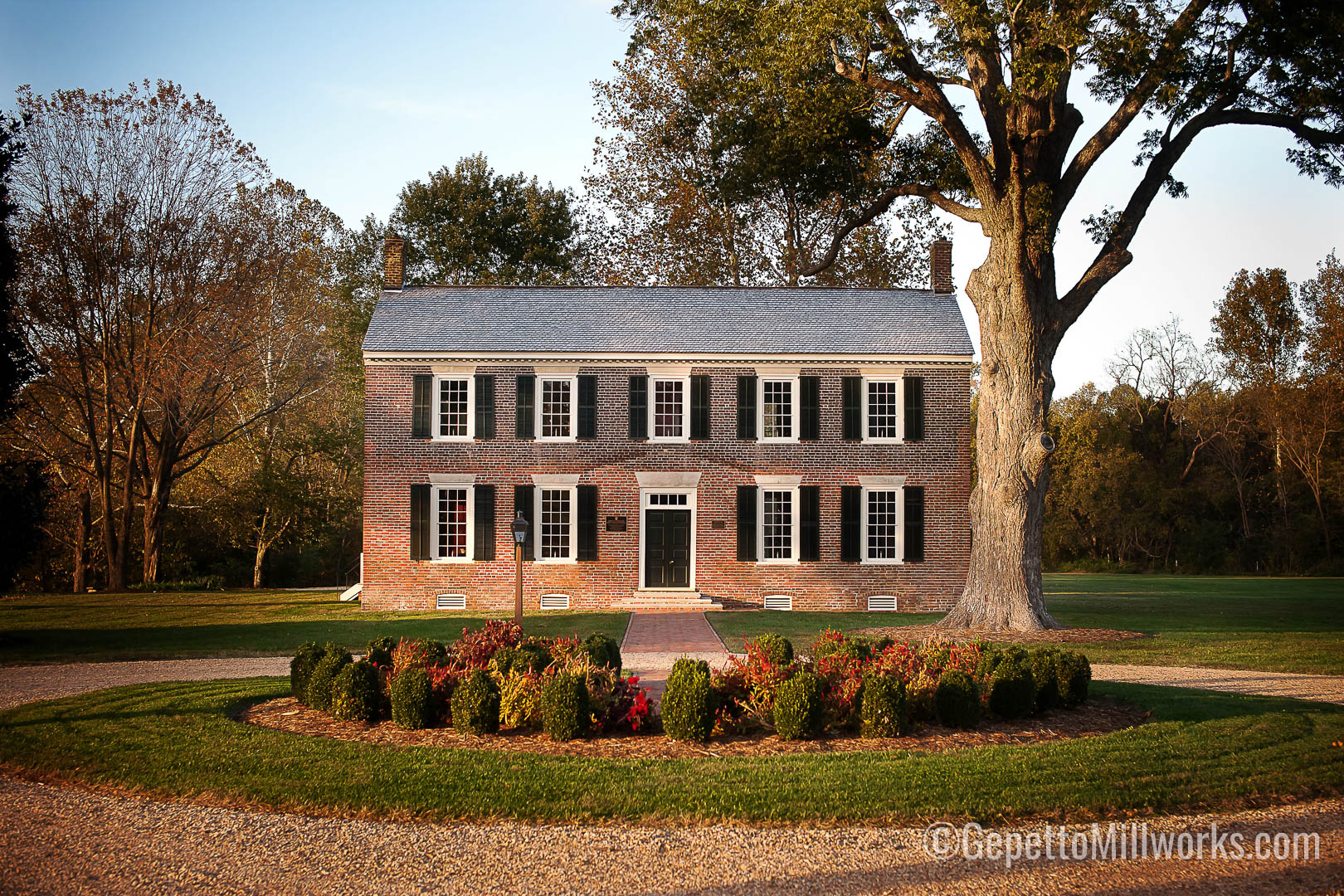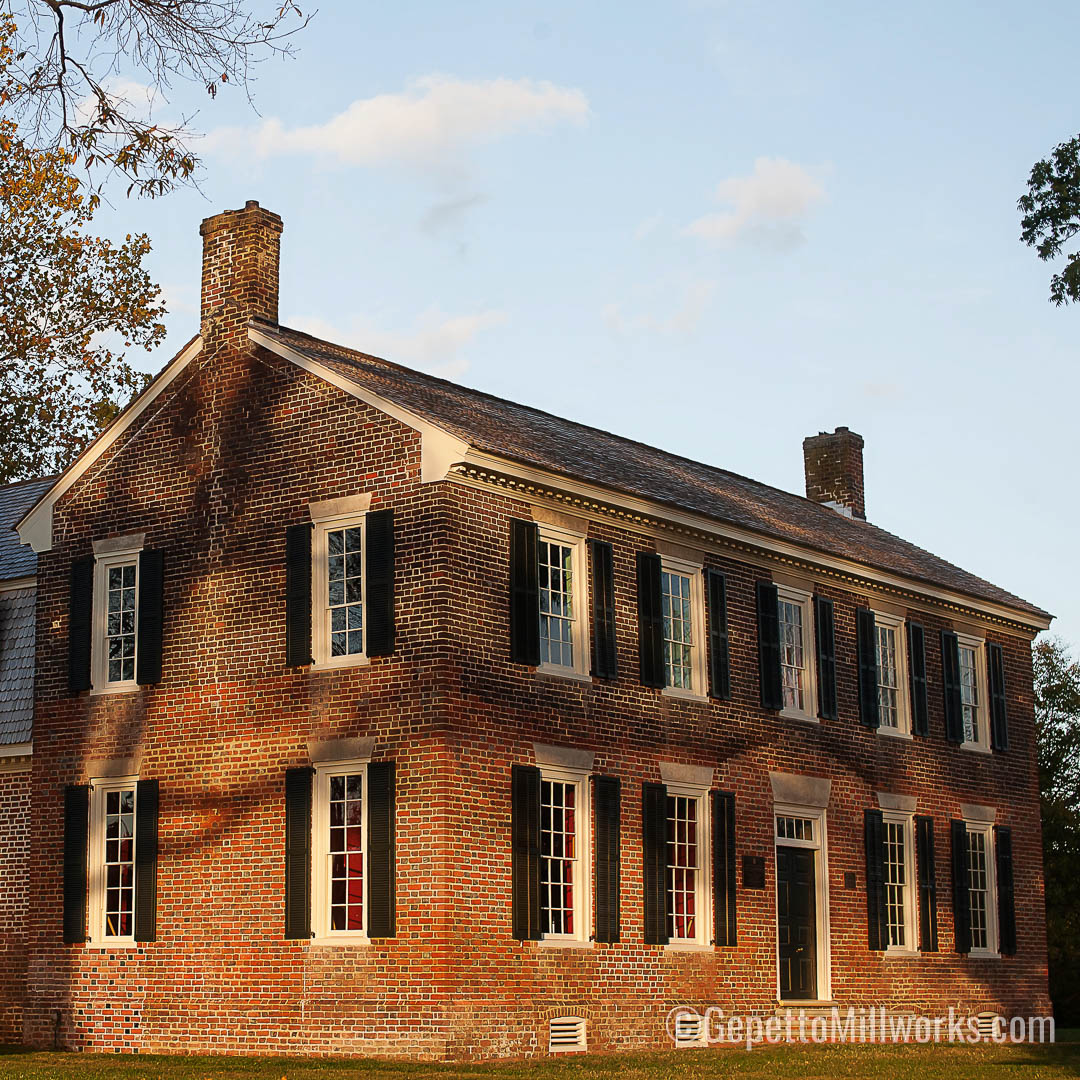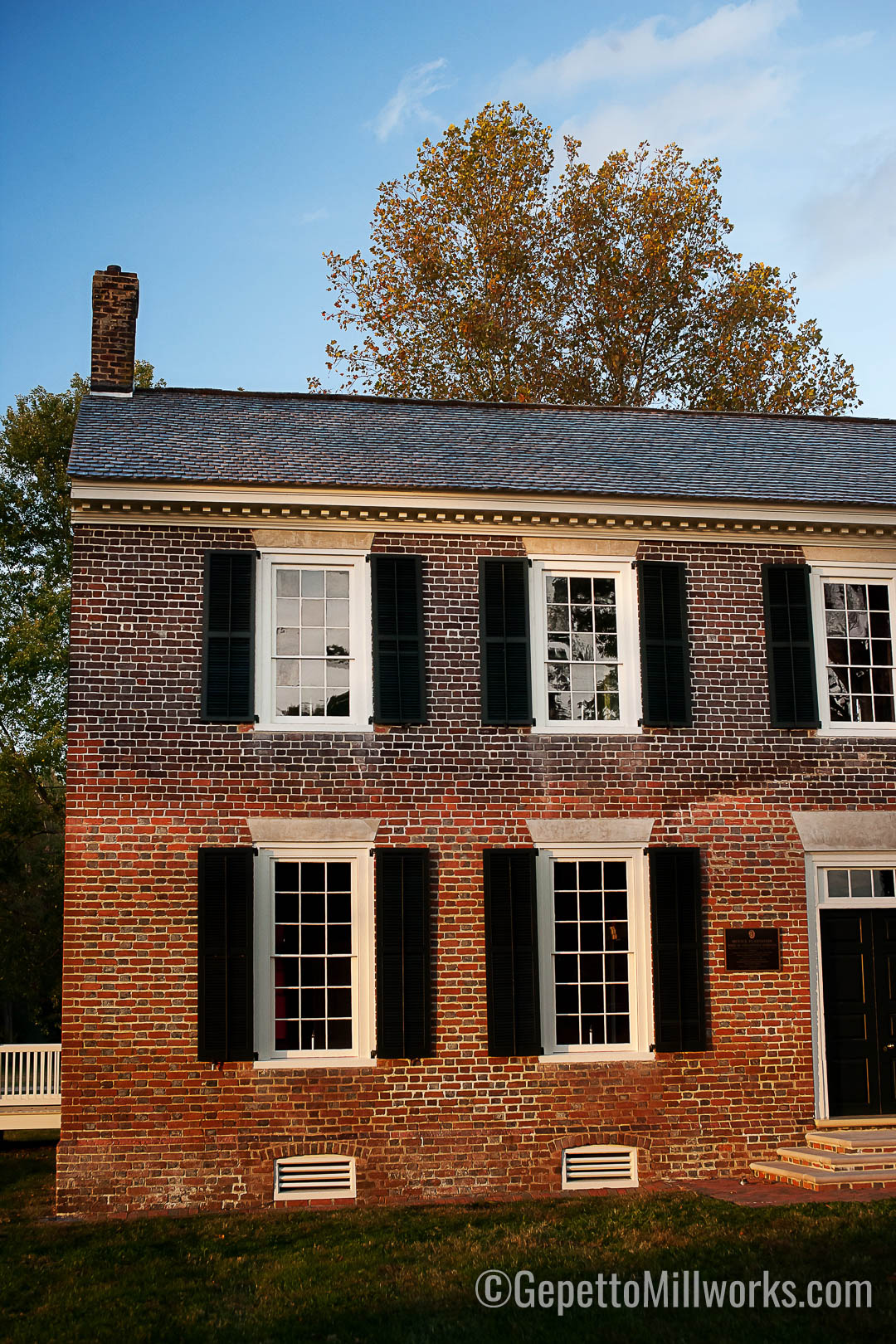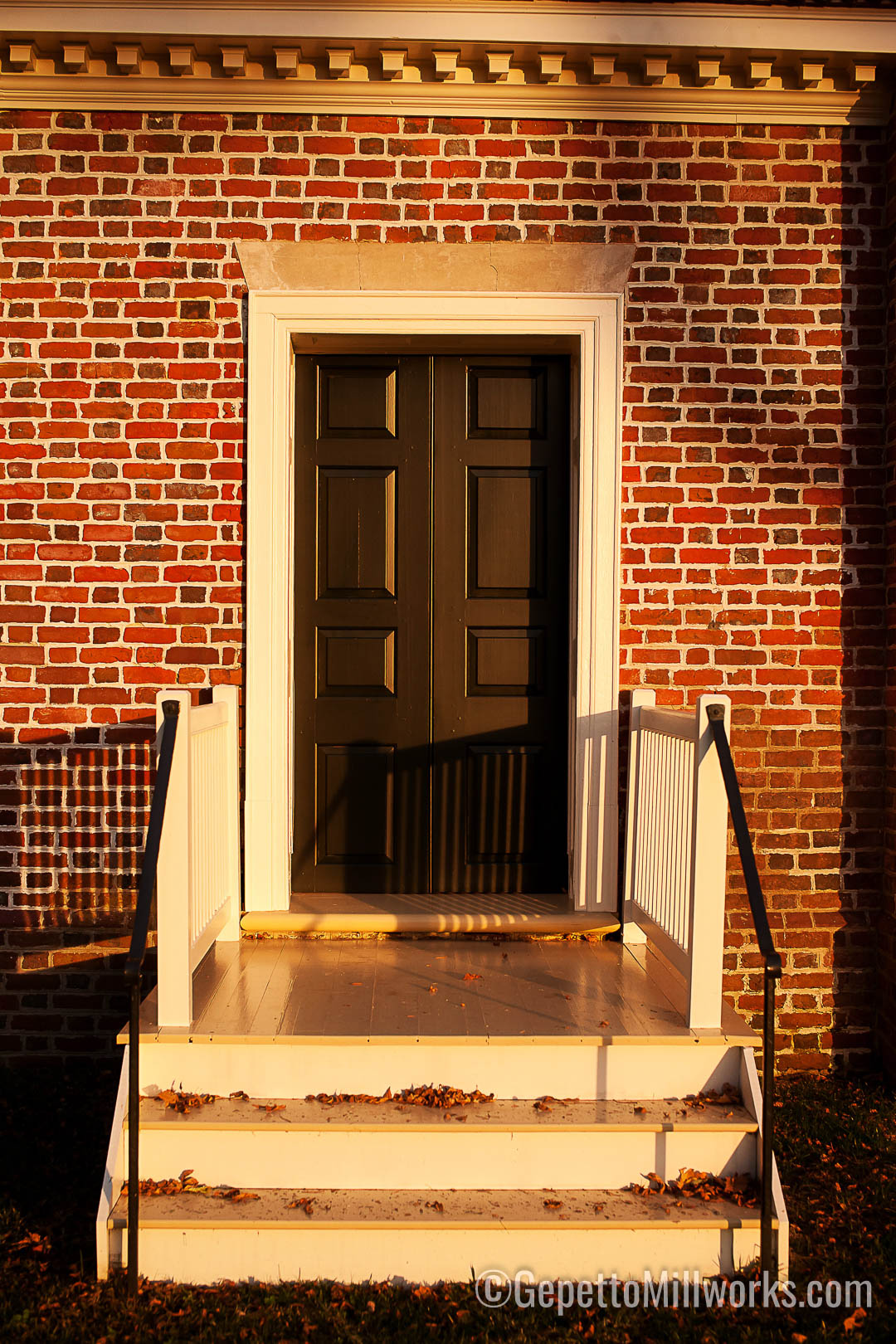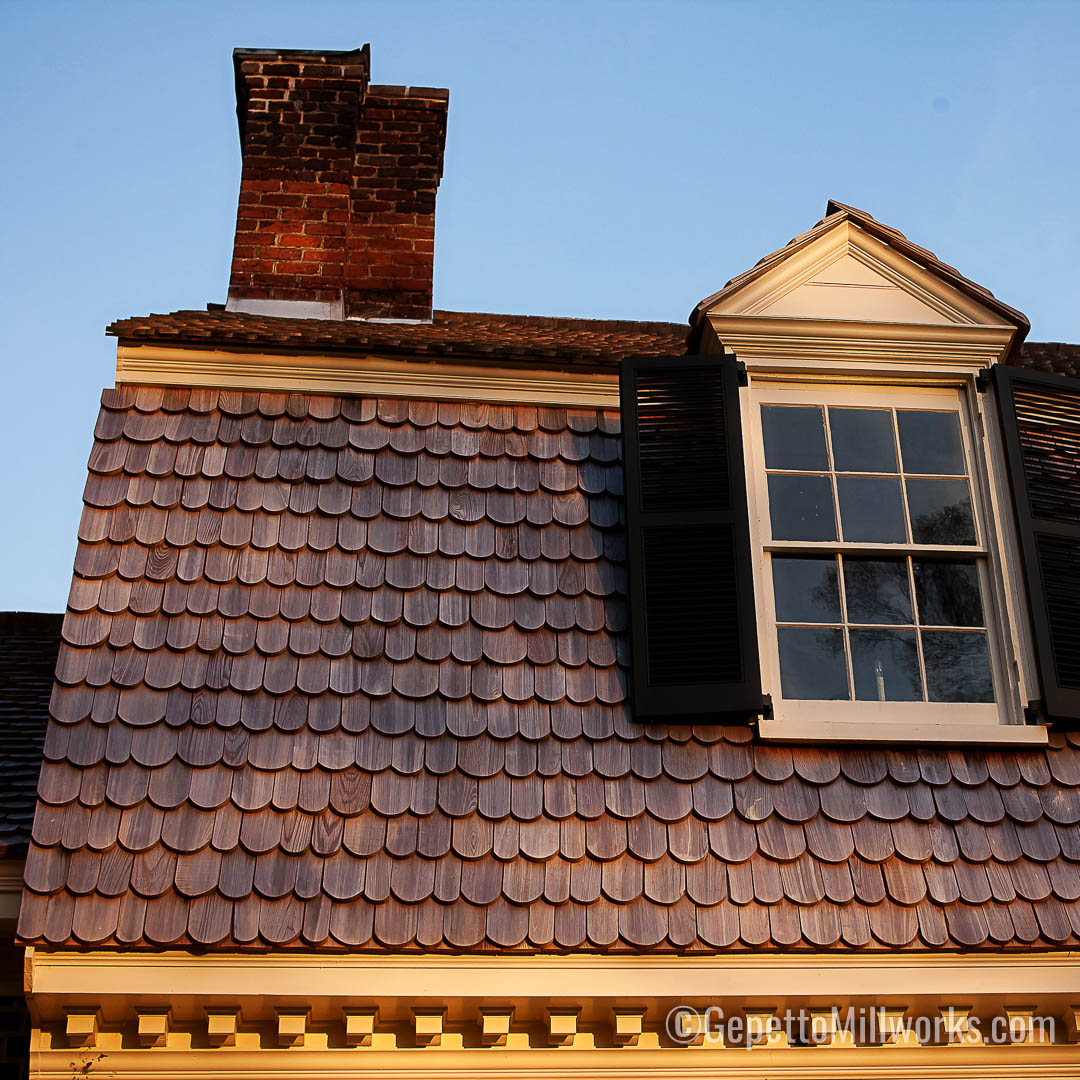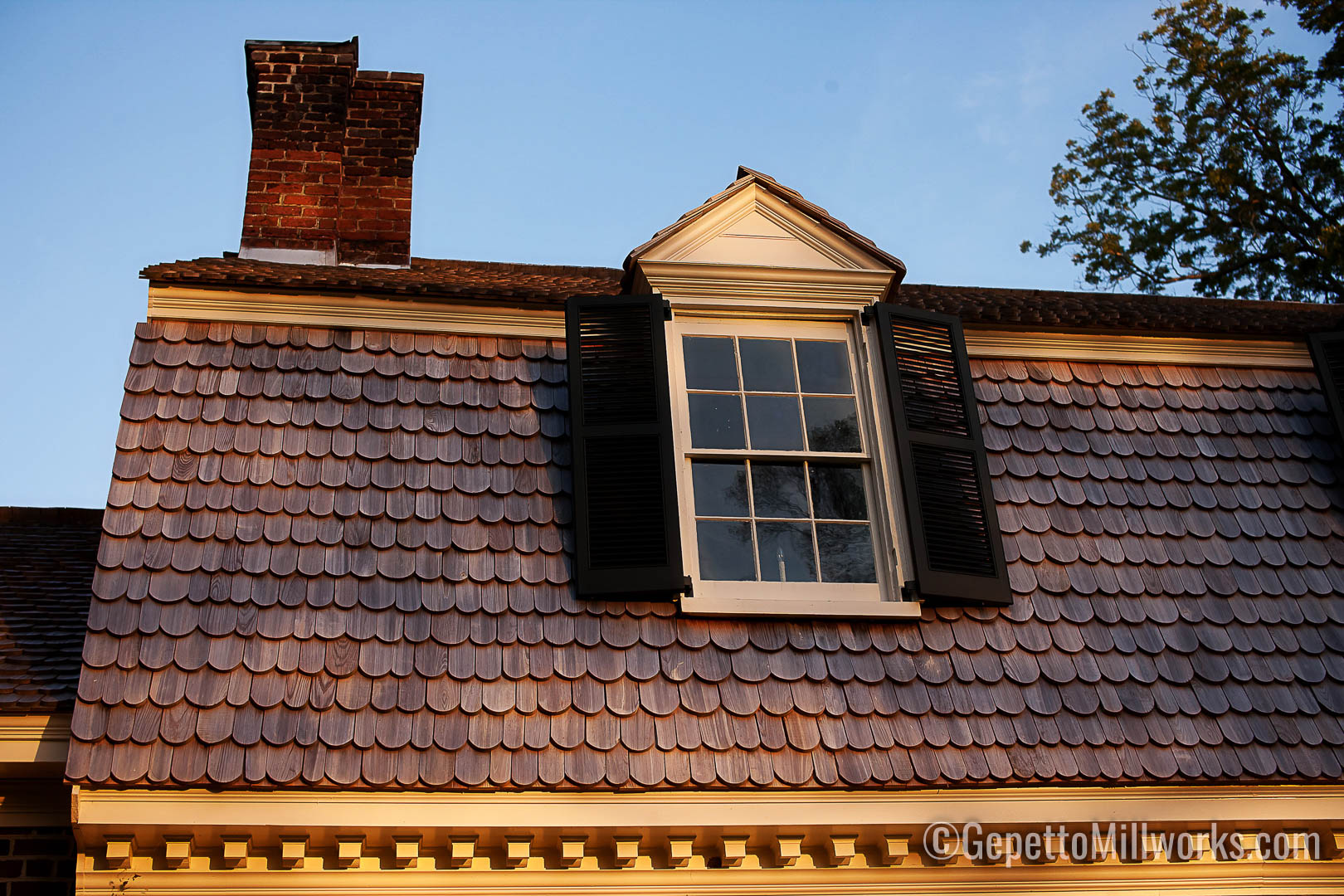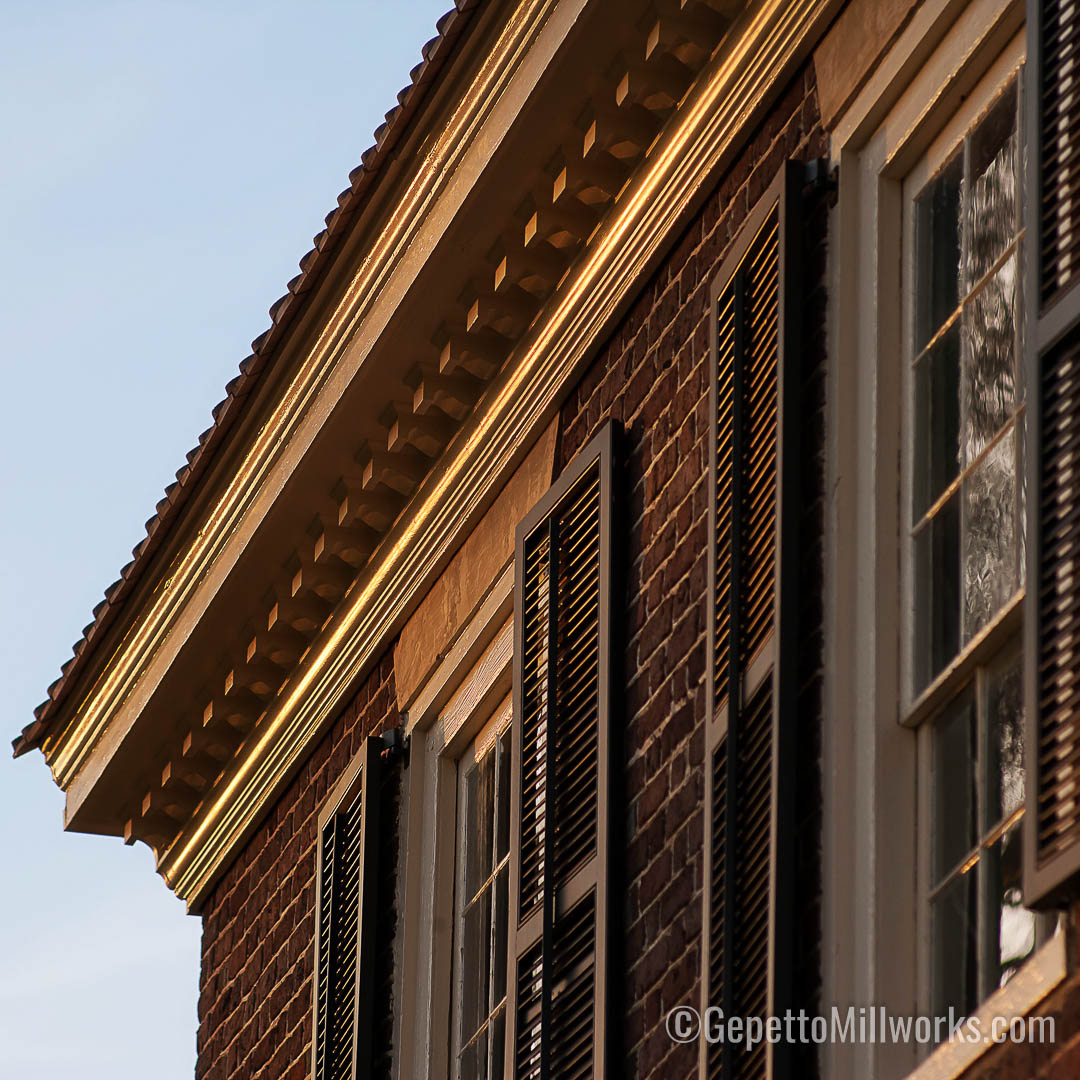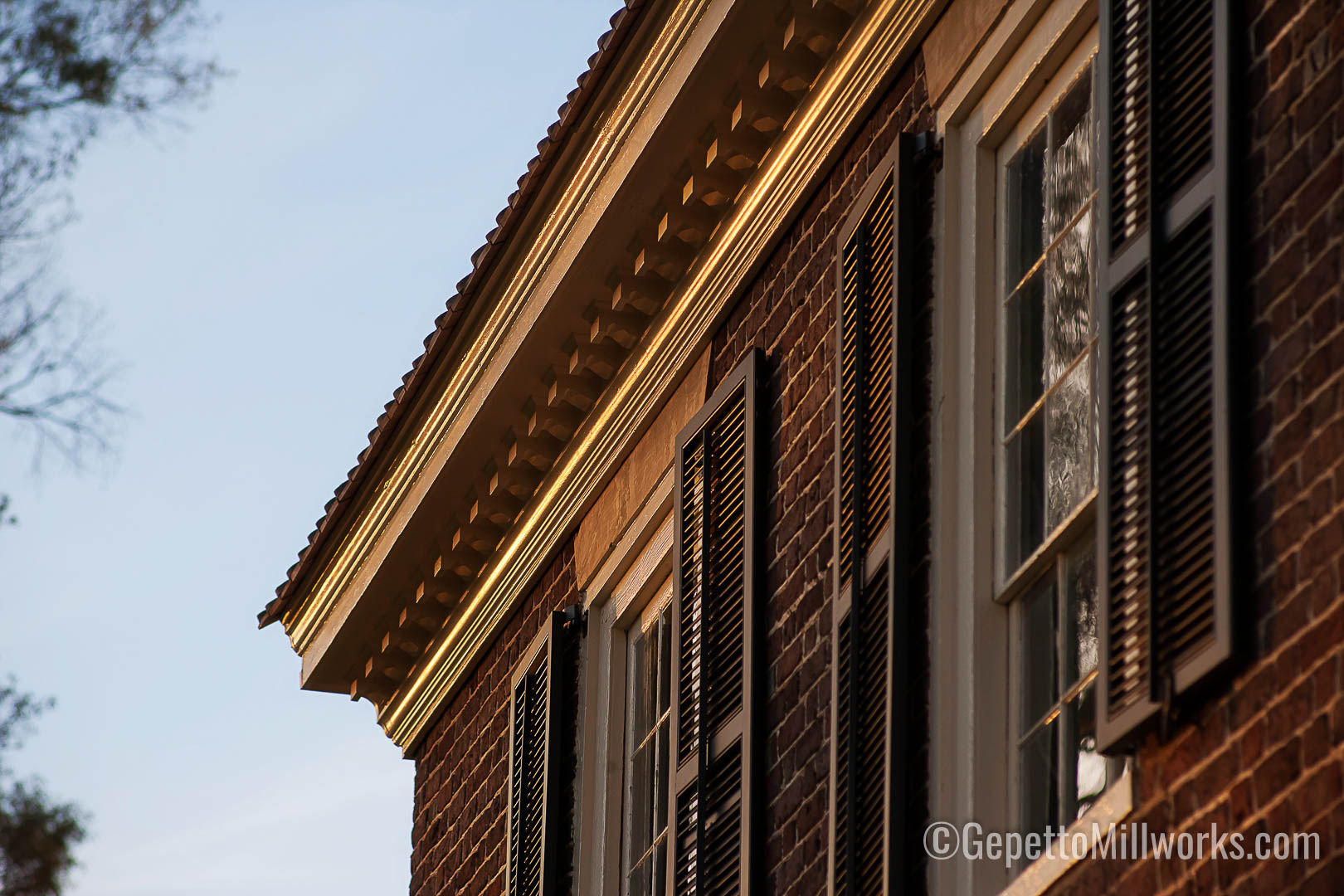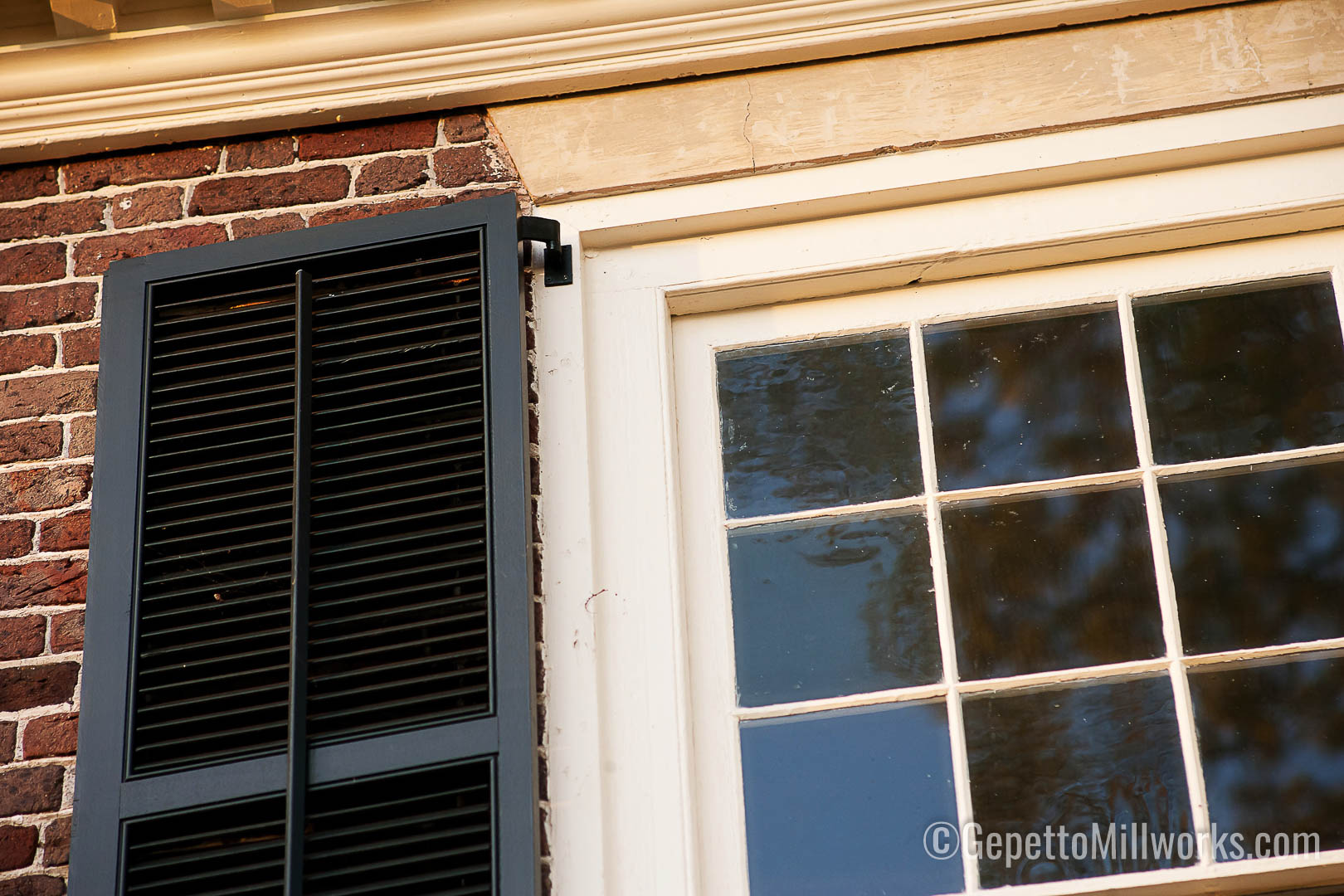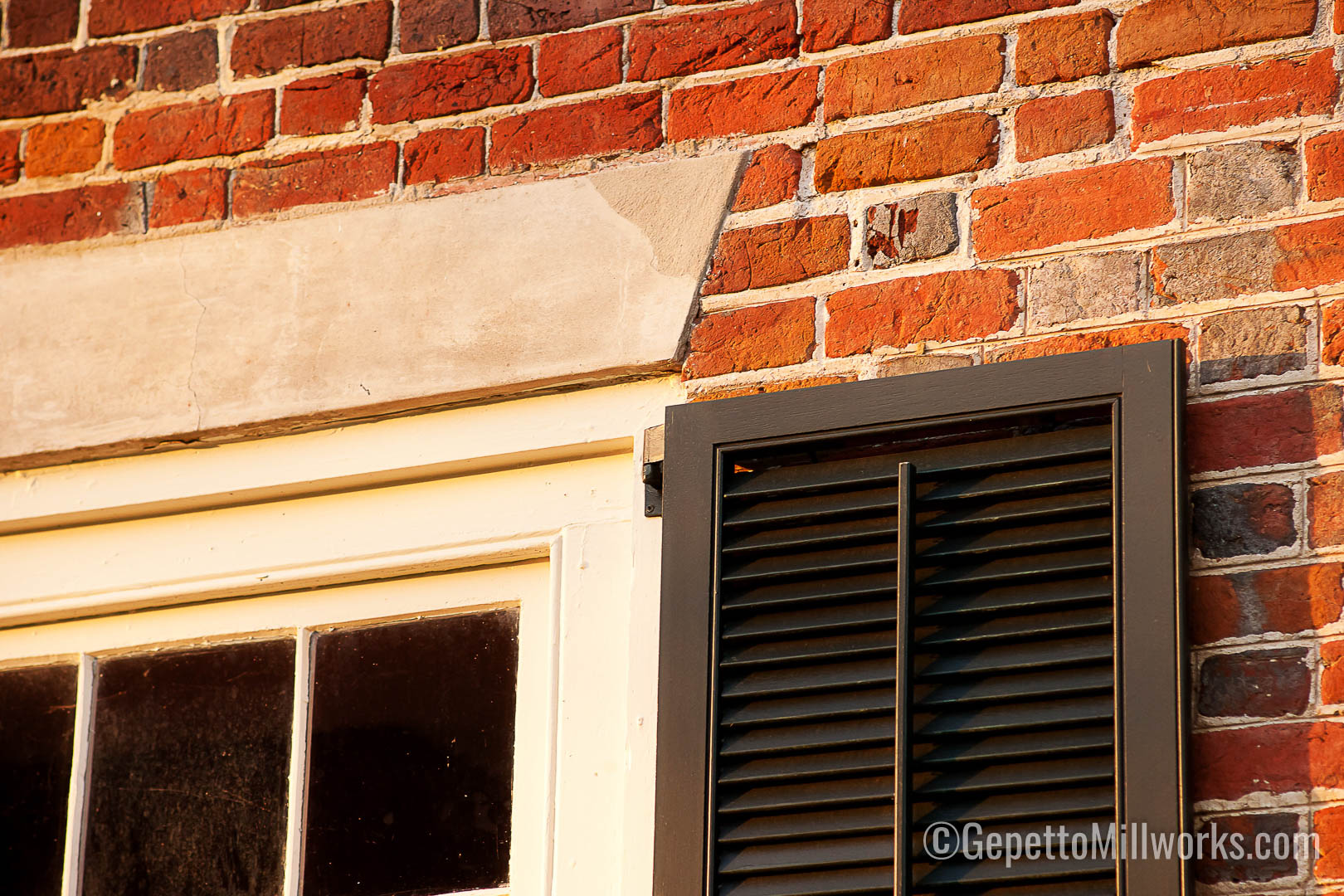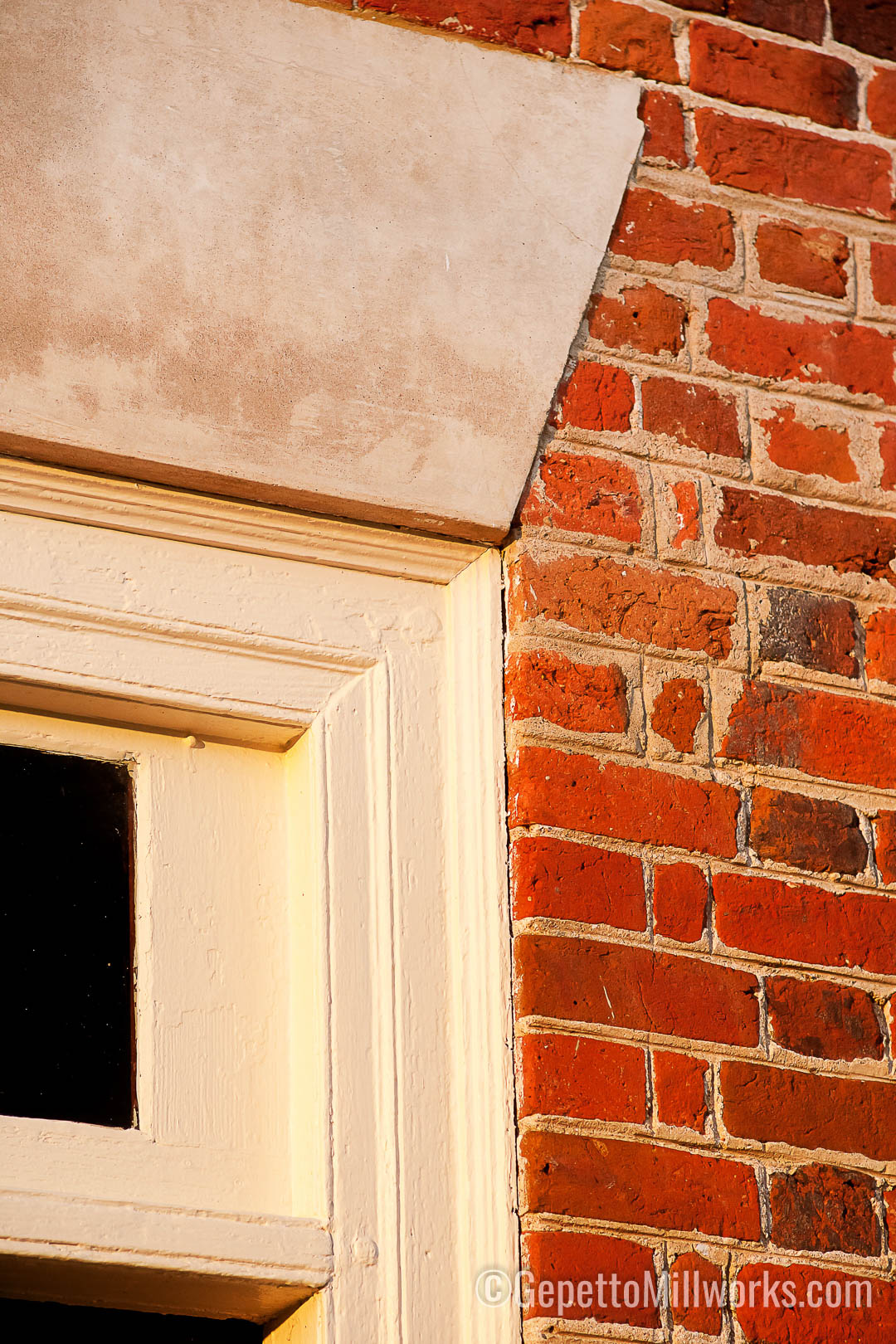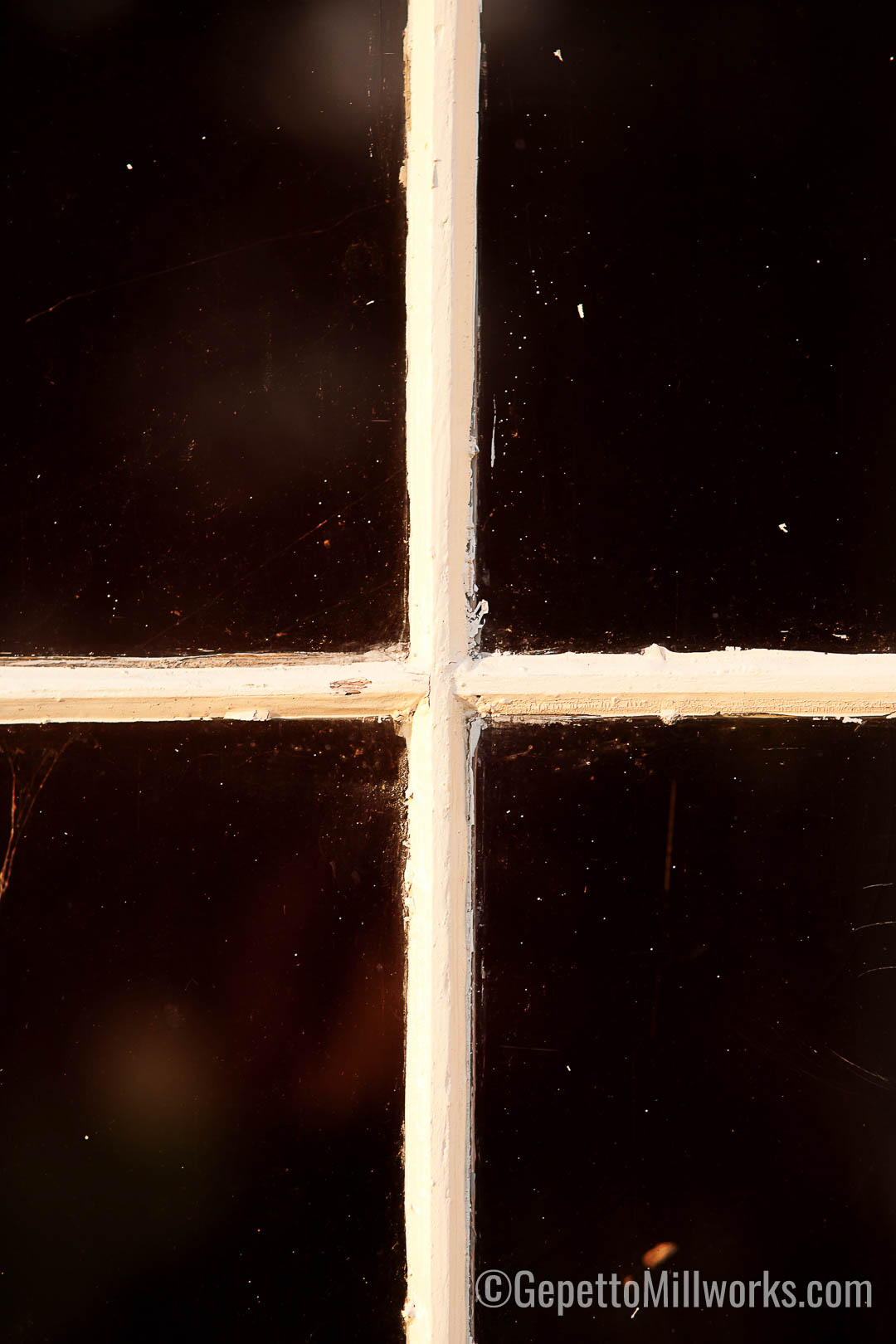Historically woodworkers did not have machine tools available for constructing the decorative and functional pieces for large plantation homes. Gepetto craftsmen try to replicate the all wood construction techniques used historically, with a blend of late 19th century machinery to keep the labor time at a minimum while achieving an authentic all wood construction. Gepetto gives historic preservation projects a single source supplier for all wood features. Gepetto uses the modern advantage of machine tooling to meet your timeline an budget needs for 21st Century Historic Preservation.
Virginia Historic Preservation Supplier
At the Hewicks plantation project, solid wood gates constructed from spanish cedar form an understated entrance to the historically long drive lined with mature willow oak trees. True to 18th century construction methods our shop craftsmen used true through mortise for the pickets. Underlying their elegant beauty lies the arc of the upper support. Cutting and shaping the arc challenges the technique of solid wood mortise construction because of the difficult alignment of the holes through which each slat passes. The Gepetto craftsmen hand built shop tools to speed the intricate manufacture process while meeting the tight production schedule. Can you believe these gates were only allowed five days of shop time? We can meet your scheduling needs for even the most complex orders. The four gate pieces set the stage at the public road and in front of the house at the end of the private drive. The plantation estate is a popular site for weddings in the 21st century with it’s rich character. Now restored, the wooden gates greet the eyes of new generations of visitors to this historic 18th century home.
Please take a look through the gallery of images detailing the construction it’s accent to the grounds of the plantation.
Gepetto also fabricated the exterior trim, historically accurate windows, and refurbished the doors in this project.
From the moment you arrive down the spectacular tree lined entrance, of Hewick Plantation, the vision will stay in your memory for years to come. The owners and staff work continuously to recreate the elegance of historic southern pageantry and are committed to preserving this heritage. The beautiful property, exquisite landscaping, and open lawn will provide the perfect backdrop for you to craft a truly unique and unforgettable day. Hewick Plantation is a premier destination for a family gatherings, outdoor weddings, or large social galas. The property is listed in both the Virginia Historic Landmarks Register and on the National Register of Historic Places.
Hewick is a historic home located near Urbanna, Middlesex County, Virginia. It was constructed in 1678 by Christopher Robinson, whose progeny held considerable power in the colony before the American Revolution, during which some members became loyalists. It was listed on the United States National Register of Historic Places in 1978.[3]
Now a two-story, five-bay, L-shaped brick dwelling, it originally had 1+1⁄2 stories, but raised to a full two stories in the mid-19th century. The rear ell is popularly believed to have been built in the late 17th century.
Built circa 1740, for Christopher Robinson III (1705-1768) and his first wife Mary Berkeley (b.1711). It is assumed that he replaced the original house known as “The Grange” that had been built here in 1678 by his grandfather, Colonel Christopher Robinson (1645-1693). However, another opinion is that the house as it is seen today was built or significantly enlarged by Christopher III’s daughter, Mrs Elizabeth Steptoe (1756-1832), who inherited the property from her only brother in 1784
Historic Replicas Supplied:
- Historically Accurate Gates
- Historically Accurate Shutters
- Historically Accurate Doors
- Eve Architectural Detailing
